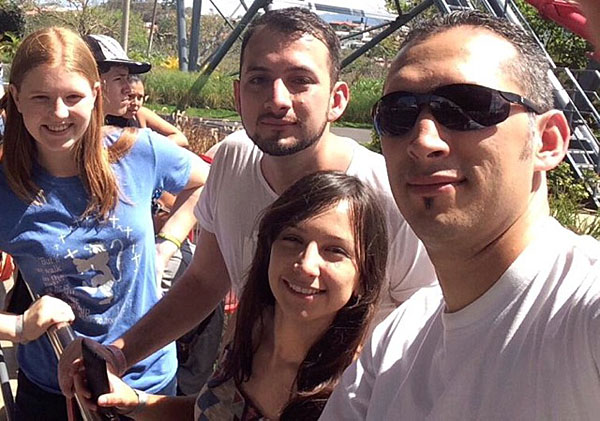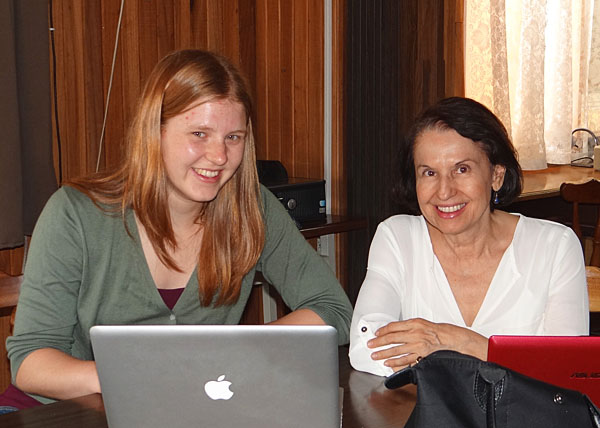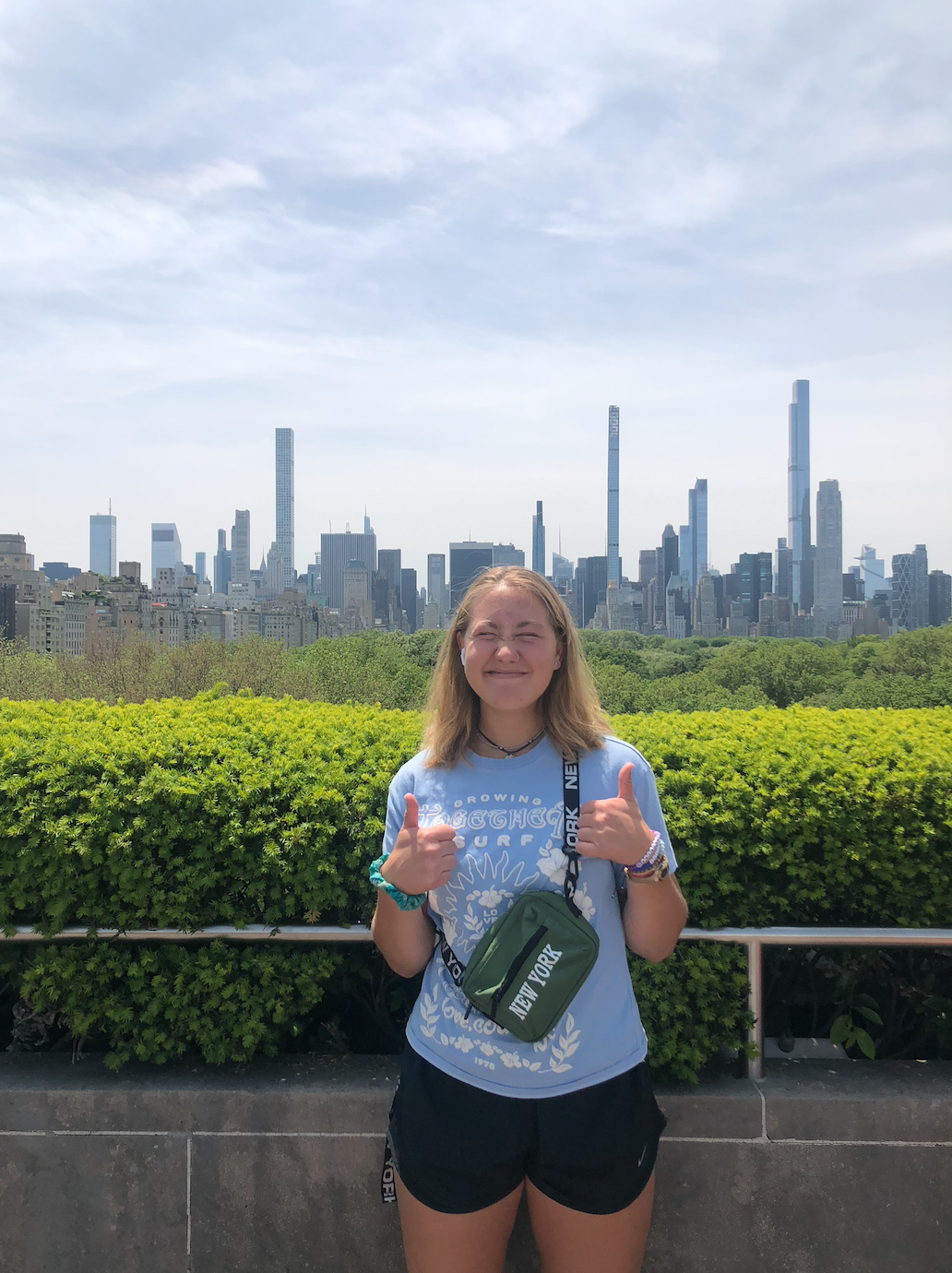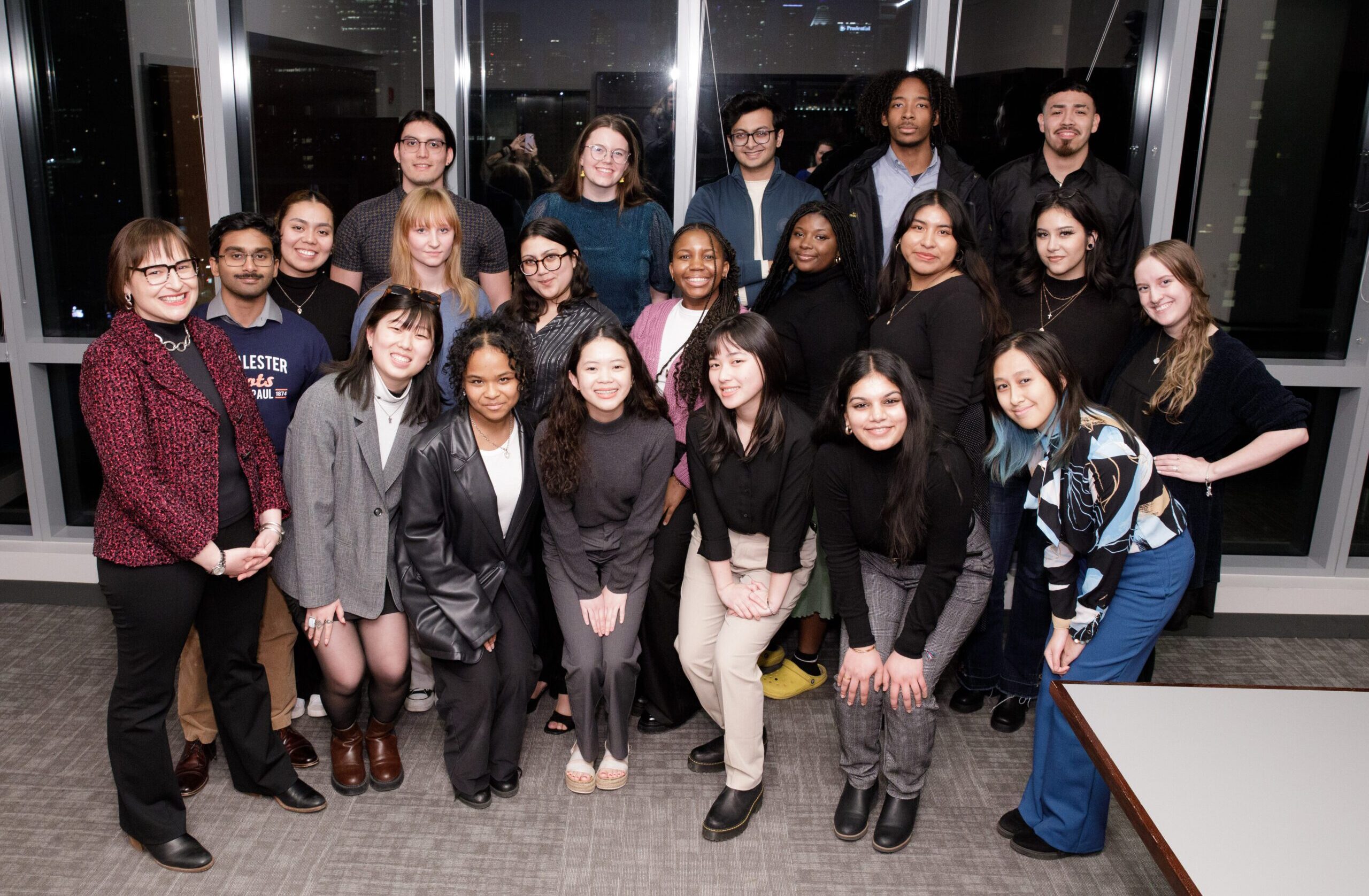Last spring, St. Olaf College student Claire Pitstick lived with a host family in the small Costa Rican town of Venecia. Each morning, she would walk to one of the local schools and conduct a survey to find out what the teachers knew about asthma and the steps to take if a student had an asthma attack in their classroom.
Costa Rica has one of the highest rates of childhood asthma in the world, a fact that hit home one evening when Pitstick’s host mother got a call from an anxious neighbor whose four-year-old son was having an asthma attack.
 Claire Pitstick on a program field trip to Llano Bonita, a coffee plantation.
Claire Pitstick on a program field trip to Llano Bonita, a coffee plantation.
Pitstick recalled the moment: “My host mom told me about [the neighbor] and said, ‘This is a real thing. It’s really important that you’re doing this project because it affects all of us.’ It was really powerful for me to hear [that]. It showed how relevant my work was.”
By the time she completed her independent research project for the ACM Costa Rica: Field Research in the Environment, Social Sciences, & Humanities, Pitstick had surveyed 185 elementary and secondary teachers, written a research paper, and created a brochure in Spanish to help raise awareness among teachers about the prevention and treatment of asthma attacks.
As a pre-med student majoring in biology and Spanish, Pitstick had been looking for an off-campus study program that would fit with all of her interests. The ACM Costa Rica program was a match with its combination of an independent research project and cultural immersion through language study and home stays in the capital city of San José and at the student’s field research site. The program offers both spring semester and spring quarter/trimester calendar options.
 Claire Pitstick with some of her host siblings in Venecia visiting an amusement park.
Claire Pitstick with some of her host siblings in Venecia visiting an amusement park.
According to Pitstick, the academic and experiential aspects of the program complemented each other and her two host families played a key role in her program experience. “They were just so loving and supportive and they treated me like one of the family,” she said. “My semester definitely would not have been the same without them.”
Preparation for the semester’s eight weeks of field research takes place at the ACM Center in San José and includes writing a formal research proposal. Pitstick’s research advisor, Dr. Anabelle Alfaro Obando, is a specialist in internal and emergency medicine. She’s also a prominent expert on epidemiology and public health and serves on a team working to combat dengue fever for the World Health Organization and the Pan American Health Organization.
“In Costa Rica, I received the priceless gift of welcome.”In a talk she gave at a St. Olaf College chapel service on November 24, Claire Pitstick reflected on the wonderful welcome and hospitality she received from Costa Ricans. Her talk begins at the 5:30 mark of the video. |
In her review of scientific literature on asthma, Pitstick relied on a lot of articles in Spanish. “Those were challenging to read, but I definitely improved my vocabulary and reading skills,” she said. “While I was actually conducting my project, I had to use more common terms. My advisor and [ACM Spanish Language Coordinator] Mario [Morera] helped me write my questionnaire in such a way that it was easy for anyone to understand.”
Pitstick said she also learned a lot about the ethical principles used in conducting research with human subjects — in this case, the school teachers — since ACM has a review process that requires the same steps that an on-campus Institutional Review Board (IRB) would follow.
Once she was in Venecia doing her fieldwork, Pitstick relied on Spanish for navigating daily life and her research project, whether she was asking principals for permission to distribute her survey in their schools or chatting with the teachers filling out her questionnaire.
While Dr. Alfaro and other program staff were just an e-mail away, she said, “When little things came up I’d think, ‘How am I going to fix this?’ and I gained a lot of self-confidence and independence that way.”
 The high school in Venecia, where Claire Pitstick started her project.
The high school in Venecia, where Claire Pitstick started her project.
Pitstick’s host mother helped her find phone numbers for the schools and make contact with the principals. Most of the schools were within walking distance — though in one case it was a 45-minute trek up the side of a mountain — and Pitstick took a bus to one that was further away.
“I really enjoyed staying in that small town, and there’s a very close-knit community,” she said. “We had lots of get-togethers with neighbors and extended family [and] I went to a baptism party and several birthday parties. I’m not a very extroverted person, so sometimes it was out of my comfort zone a little bit, but it got me to speak Spanish a lot and meet lots of new people, so it was great in that way.”
Her host parents also talked about her research topic with everyone they knew. “[My project] related to everyday life for a lot of Costa Ricans,” said Pitstick. “Everybody either had asthma themselves or knew somebody or a family member with it, so informally I learned a lot about asthma through conversations, which was important to my research project, as well.”
During the last few weeks of the semester, she returned to San José to analyze the data and write her research paper. Research Coordinator Mike McCoy, who teaches research methods to the students, helped her refine the statistical analysis and her advisor was instrumental in suggesting ways to effectively organize and present her findings.
 Claire Pitstick with her research project advisor, Dr. Anabelle Alfaro Obando.
Claire Pitstick with her research project advisor, Dr. Anabelle Alfaro Obando.
“The main thing I found was that if the teacher had an asthmatic family member, then they knew more about asthma,” Pitstick said. “That makes sense. Then, of course, we want to make sure that everybody knows how to prevent an asthma attack and knows how to treat an asthmatic person.”
She also found that 85% of the teachers were very interested in getting training about asthma. Toward that end, Pitstick created a PowerPoint presentation with her research results and the brochure highlighting some of the key points for preventing and treating asthma attacks, and sent copies to the principals of the schools she had visited.
Along with praising Pitstick for her outstanding work on the project and the “top professional quality” of her brochure and presentation, Dr. Alfaro noted that “it was quite satisfying for me to work with a student who forced me to work even harder as her advisor. Her everyday desire to learn more and go deeper into her research project became my main encouragement to be a better guide for her…. It is students like Claire that push us, as advisors, to be more solid and better prepared professionals, whose time is always well invested when working with people like her.”
All photos are courtesy of Claire Pitstick.
Links:
- Costa Rica: Field Research in the Environment, Social Sciences, & Humanities (spring semester and spring quarter/trimester)
- Abstract of Claire Pitstick’s project and her brochure for teachers
- Student blogs and news & features about the Costa Rica field research program
- Costa Rica: Community Engagement in Public Health, Education, & the Environment (fall semester)
Note: Dr. Alfaro’s observations were translated from Spanish by Mario Morra.









